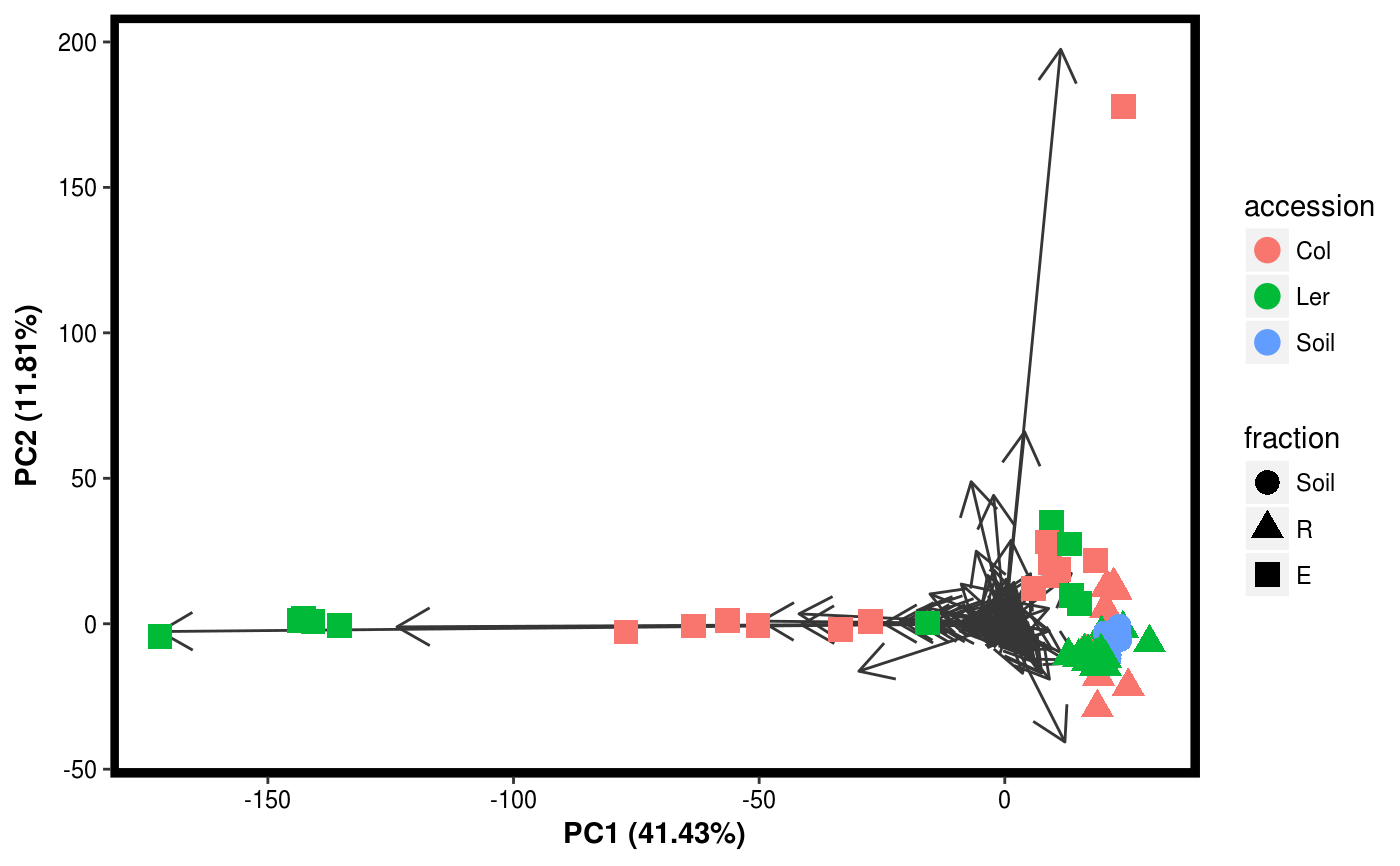Function that performs principal component analysis on an abundance matrix.
PCA(x, cor, dim) # S3 method for default PCA(x, cor = FALSE, dim = min(nrow(x), ncol(x))) # S3 method for Dataset PCA(x, cor = FALSE, dim = min(nrow(x$Tab), ncol(x$Tab)))
Arguments
| x | Numeric matrix where samples are columns and rows are species, or a
Dataset object, see |
|---|---|
| cor | logical value indicating whether the correlation matrix should be used instead of the covariance matrix. |
| dim | Number of dimensions to return. |
Value
A PCA object. Includes the same attributes as a
pca object from the labdsv package.
When the Dataset method is used, it includes two additional slots:
"Map"The Mapping file for the samples.
"Tax"The Taxonomic information of the taxa.
Details
This function is the same as function pca from the
labdsv package, but includes a methdod for Dataset objects.
See also
create_dataset, pca, PCO, pco, plotgg.pca
Examples
data(Rhizo) data(Rhizo.map) Dat <- create_dataset(Rhizo,Rhizo.map) Dat.pca <- PCA(Dat) plotgg(Dat.pca,col="accession",shape="fraction",point_size=4,biplot=TRUE)summary(Dat.pca)#> Principal Component Analysis: #> 69 Components #> #> Component Var.explained Cumulative #> 1 PC1 41.43 41.43 #> 2 PC2 11.81 53.24 #> 3 PC3 7.15 60.39 #> 4 PC4 6.56 66.95 #> 5 PC5 6.18 73.13
